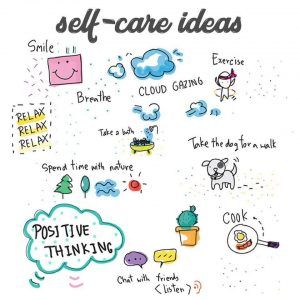
Mindfulness And meditation
How does Mindfulness and Meditation influences our physical wellbeing?
Chronic pain has more emotional links than we think…
I was listening to the radio driving to a home visit from the clinic one afternoon and the discussion was on mindfulness and meditation. It got me thinking how important this is for me to understand for my patients wellbeing. As a Physiotherapist, my focus is diagnosing your physical pain or injury, finding out why it happened (if it isn’t as obvious as a rolled ankle -ow!) and putting in place a management plan to get on top of it.
This is often a lot to do in a 30-45 minute session, so sometimes the importance of stress/depression/anxiety (emotional wellbeing) gets pushed to the back burner when really it might be top of list for triggering your pain.
More and more now we are understanding that pain that lasts longer than three months is classified as “chronic or persistent pain” and means that the original tissue injury is no longer the cause of pain. It is now the brain sending messages to the area and telling the local tissues that there is still an injury in place- even if there is not. Yes the mind is very powerful indeed. It is the one and only producer of pain.
So, this leads me to the whole point of this blog – mindfulness and meditation.
The influence of the brain – our minds – is very powerful so we must treat it with the respect, care and love it deserves. So yes we will roll out our muscles, stretch out tight muscles and strengthen weaknesses but what about spending time to quiet and enforce positivity through our mental bodies.
I recommend mediation and mindfulness, especially if you find you are hitting your head against a brick wall with your rehabilitation – it may be the missing puzzle piece which is limiting your progress.
Examples of mindfulness and mediation
This may be simply setting aside 5 minutes for yourself finding a comfortable seat, taking deep, slow breaths, closing your eyes and focusing on yourself and your breath. Alternatively, you can complete a physical mindfulness or moving meditation, such as pilates, running, walking and of course yoga- the definition of which is connection to ourselves.
The main conditions whe practising mindfulness and meditation is beneficial for are lower back pain, upper back tensions/ neck pain, TMJ, mid back pain, hypertonic (tight) and painful pelvic floor, and headaches.
I hope this gets you thinking about practising mindfulness and meditation as part of your routine. Remember, like anything it needs practise! So don’t give up after a few bad sittings. Your mind will always wander but it is the ability to bring it back to your focus that is key.
All the best in your discovery of yourself and getting on top of your pain one meditation at a time.
May 2018 Lizzy Hore Physiotherapist


